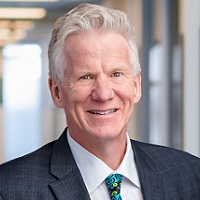 By Nick van Terheyden aka Dr Nick, Principal, ECG Management Consulting
By Nick van Terheyden aka Dr Nick, Principal, ECG Management Consulting
Twitter: @drnic1
Host of Healthcare Upside Down – #HCupsidedown
When people criticize the seemingly glacial pace of progress in healthcare, they often point to the banking system as an example of how things should work. You can draw money out of an ATM almost anywhere in the world, any time of day. You can manage your funds online and conduct transactions using your smartphone. Doesn’t get much easier.
But that progress didn’t happen with the blazing speed that today’s rose-tinted-spectacled observers imagine. The original ATM was a combination of concepts, ideas, and patents from a number of individuals from the UK and the US in the 1960s. Convenient ATM cards would come later; the earliest ATMs instead required users to deposit checks that were impregnated with carbon-14—a mildly radioactive substance.
Episode NOW on Demand
Obviously, things got better. But that journey took many years, and ATM users had to navigate systems that were not interoperable and did not communicate in real time. Sound familiar?
In my past, building a brand new hospital offered a unique and wonderful opportunity to start from scratch—in our case, to create a paperless, all-digital facility in the early 1990s. The progress of technology around us was so rapid that in the original design for the hospital, we allocated a substantial amount of space for the computer room; later, we found ourselves with excess space, because the technology had shrunk.
When those opportunities come along, they offer incredible learning opportunities and generate amazing insights—many of which I still bring to hospital technology installations. Events like those held by the College of Healthcare Information Management Executives (CHIME) are exactly the type of environment for sharing those insights.
Joining us on this episode is Tanya Townsend, the 2022 CHIME board chair and senior vice president and chief information officer at LCMC Health, a New Orleans–based, not-for-profit health system. She talks about her own experiences building a digital hospital, her work with CHIME, and the need for healthcare technology professionals to share ideas through industry organizations. Here are few excerpts.
Building a digital hospital (before it was cool).
“It was back in 2004, and I was in Wisconsin. We had a vision for what a digital hospital could look like. What made that so unique at the time was that it was before Meaningful Use. We had this vision of being paperless—we didn’t have a medical record filing room. We were doing computerized physician order entry (CPOE) before it was fully adopted or accepted. There was a lot of skepticism around that. We didn’t have a single electronic health record vendor to deal with; we probably had a dozen or more systems that all had to be integrated. We had tablets, which probably weighed about eight pounds at the time. We were doing voice recognition. It was really exciting to be part of that leading edge. Today it’s all so widely adopted, but I really feel like I was on the front lines of making that a reality.”
Joining CHIME and later chairing the board.
“I did CHIME’s boot camp, and it just opened this whole new world to me. I was from this tiny hospital in rural Wisconsin, and now I’m exposed to top industry leaders. I’m in the room and learning from them. And I just felt such a belonging, like I’d found this new family. I’ve been a member ever since. When I had the opportunity to get even more involved, I ran for the board twice. And that was just really exciting to me by itself. I made it to the board in 2019, so this is my fifth year now. CHIME has been around for 30 years, and I’m the third woman in 30 years [to be chair of the board], so it’s just been a great journey.”
What comes next.
“It’s been exciting to watch us move from a cost to be managed, to reporting to [the C-suite]. Every strategy is enabled by technology now, so we are partners at the table. Where I’d like to see things next is just taking it to that next level. How do we get more involved with the patient experience and have patient engagement? Because that has shifted. The last decade or so, we really focused on the clinician experience, which continues to be very important. But with consumerism, patients know they have a choice. They want easy access, and they want to be a part of their care. So that’s where I want to see things go next with digital healthcare.”
This article was originally published on the ECG Management Consulting blog and is republished here with permission.
About the Show
The US spends more on healthcare per capita than any other country on the planet. So why don’t we have superior outcomes? Why haven’t the principles of capitalism prevailed? And why do American consumers have so much trouble accessing and paying for healthcare? Dive into these and other issues on Healthcare Upside/Down with ECG principal Dr. Nick van Terheyden and guest panelists as they discuss the upsides and downsides of healthcare in the US, and how to make the system work for everyone.
Tune in weekdays at 9am, 5pm, and 1am ET.
Join the conversation on Twitter at #HCupsidedown.
